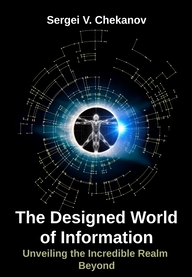The Rise of Scientific Neo-Romanticism
May 10, 2025 - Reading time: 3 minutes
Romanticism, also known as the Romantic era or movement, emerged in Europe in the late 18th century as a powerful reaction against the rationalism of the Enlightenment and the mechanization brought on by the Industrial Revolution. More than a mere artistic trend, Romanticism was a sweeping intellectual and cultural movement that reshaped literature, art, music, and philosophy.
Romanticism championed the individual-his subjectivity, imagination, and emotional depth. In contrast to Enlightenment ideals that emphasized logic, order, and empirical reasoning, Romantic thinkers and artists celebrated intuition, personal experience, and the mysterious dimensions of existence. They viewed reason as limited and often sterile when compared to the richness of human feeling and creativity. Romanticists saw the natural world not just as a resource or backdrop, but as a living, spiritual force.
In retrospect, the Romantic movement did not simply reject reason; it sought to balance it by reaffirming the human spirit. Its legacy can still be felt today in the enduring power of art to stir the heart, challenge the mind, and awaken the soul to the mysteries of life.
Scientific Romanticism a philosophical and aesthetic outlook that seeks to harmonize the rigor of science with the emotional depth, imagination, and reverence for beauty found in Romanticism.
While traditional science often views the universe as a machine governed by laws, scientific romantics see it as a living tapestry-rich with beauty, symbolism, and inter-connectedness. Scientific Romanticism leans toward the idea that consciousness and subjectivity are not external to the universe but integral to how it is explored and understood.
Carl Sagan and Richard Feynman both conveyed the idea that science is not a cold, lifeless process, but a deeply emotional and spiritual journey toward understanding reality.
In the modern information age of the 21st century, a new wave of thought known as Scientific Neo-Romanticism has begun to take shape. Building on the foundations of 19th-century Scientific Romanticism, this contemporary evolution places greater emphasis on consciousness, spirituality, and the idea of informational reality-reflecting the profound influence of computers, artificial intelligence, and quantum computation.
An example of Scientific Neo-Romanticism in video form can be found on various digital platforms. One notable instance is the YouTube channel Designed World, which focuses on short films that capture the aesthetic and philosophical essence of this emerging movement. Many of these films are inspired by the earlier work of Dr. S. V. Chekanov, particularly his 2024 book "The Designed World of Information: Unveiling the Incredible Realm Beyond", which explores the interplay between information, meaning, and reality through a romantic-scientific perspective.
Will this mark the beginning of a new romantic era in science? It's too early to tell. But one thing is certain: watching these videos, created in the spirit of Scientific Neo-Romanticism, offers a deeply engaging, truly romantic, and thought-provoking experience.
T.Smaltsar (MD)
